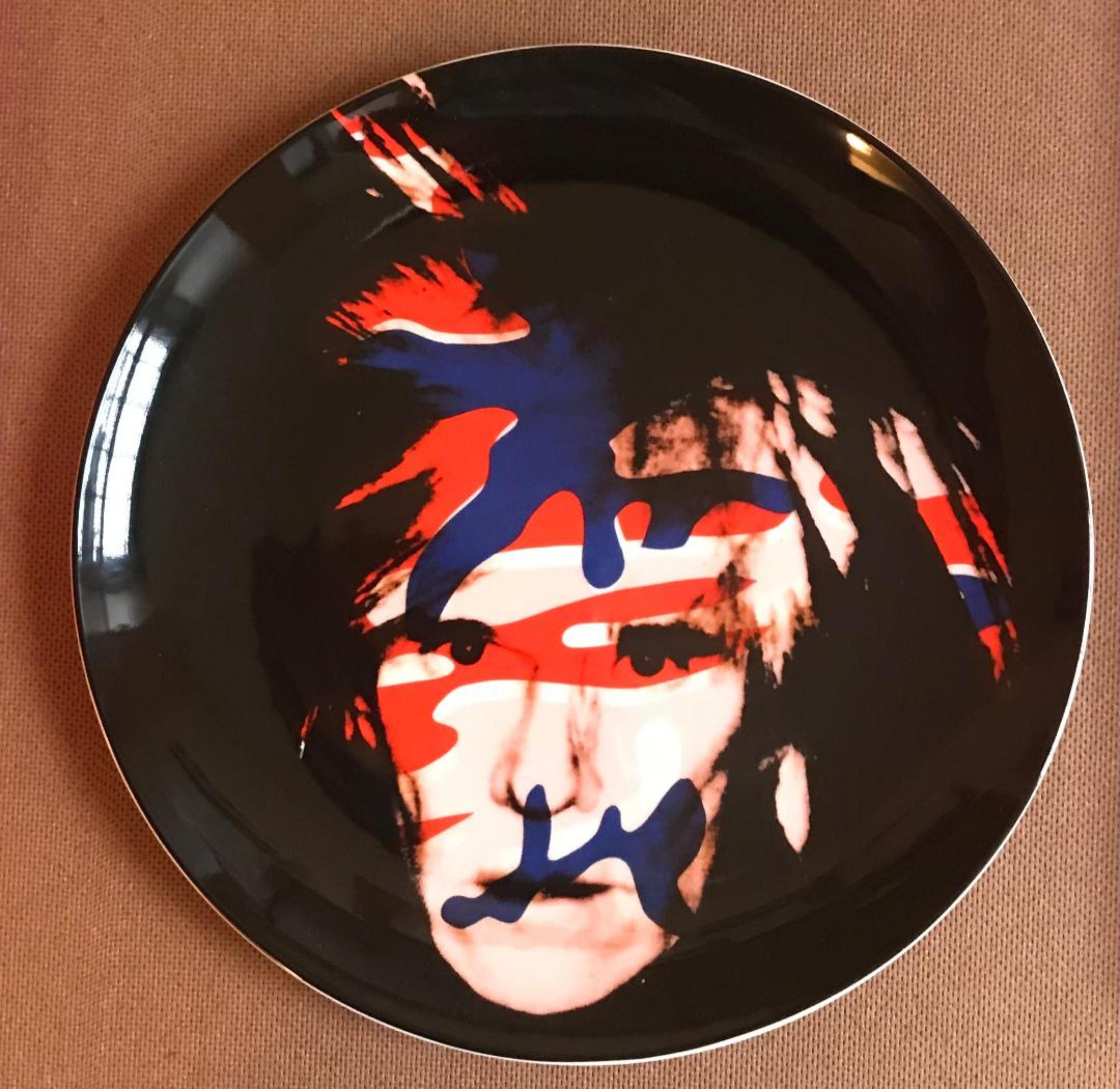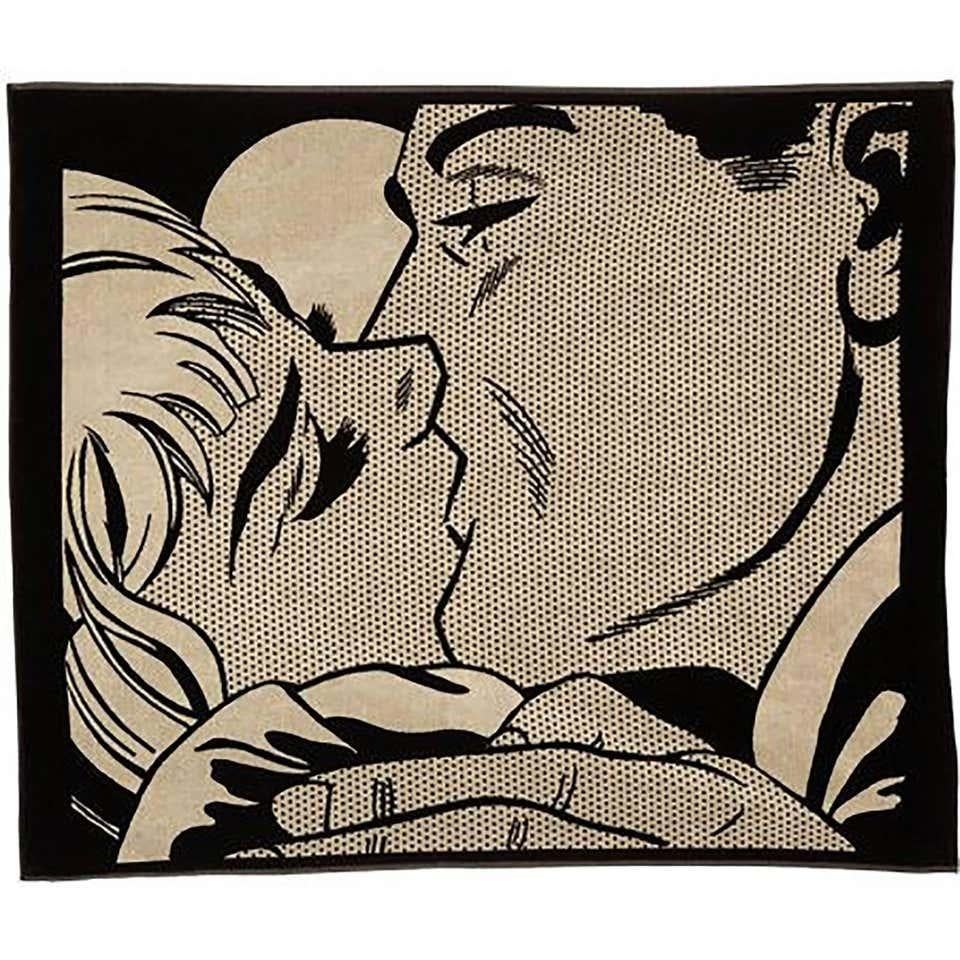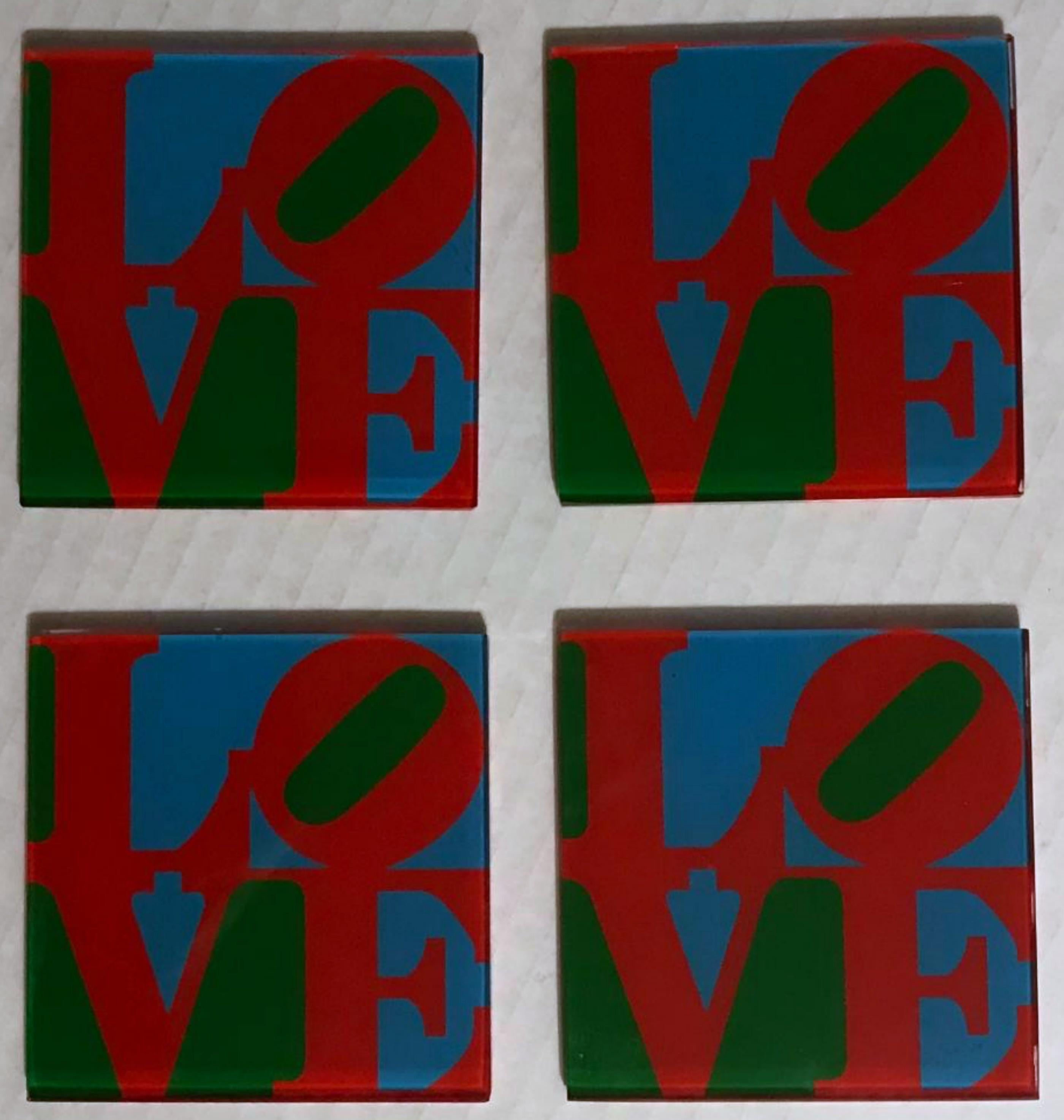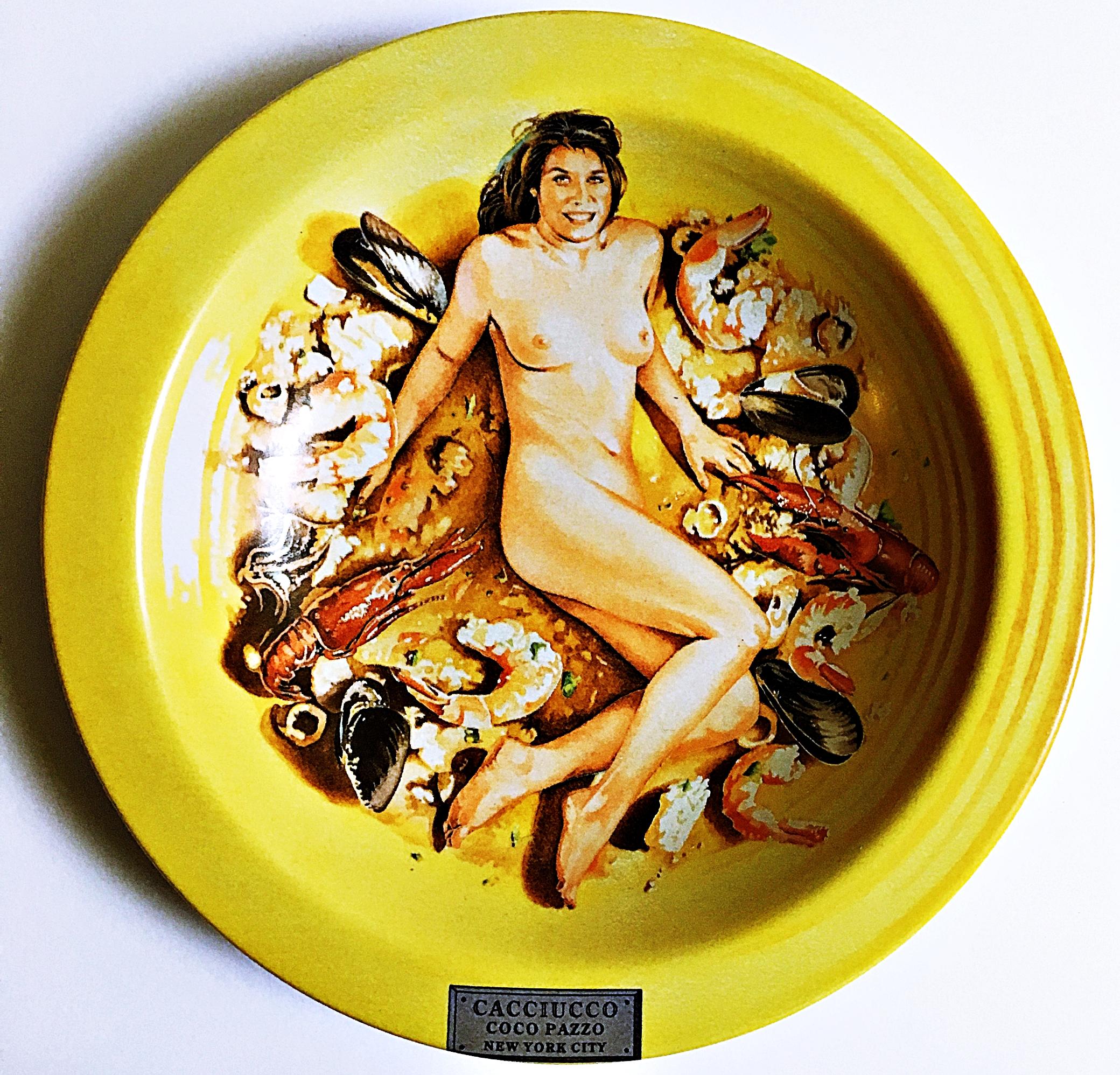Items Similar to ROBOT Triptych (Set of Three (3) Skateboards)
Want more images or videos?
Request additional images or videos from the seller
ROBOT Triptych (Set of Three (3) Skateboards)2017
2017
About the Item
The Skateroom x Estate of Jean-Michel Basquiat
ROBOT Triptych (Set of Three (3) Skateboards), 2017
Set of 3 Silkscreens on 7-Ply Canadian Maplewood Skate Decks (Set of 3)
Estate of Jean-Michel Basquiat copyright and printed signature on the back
31 × 8 inches
Unframed
Excellent condition; measurements apply to each skate board. Brand new.
- Creation Year:2017
- Dimensions:Height: 31 in (78.74 cm)Width: 8 in (20.32 cm)
- Medium:
- Movement & Style:
- After:Jean-Michel Basquiat (1960 - 1988, American)
- Period:
- Condition:
- Gallery Location:New York, NY
- Reference Number:1stDibs: LU1745212595172
About the Seller
5.0
Platinum Seller
These expertly vetted sellers are 1stDibs' most experienced sellers and are rated highest by our customers.
Established in 2007
1stDibs seller since 2022
292 sales on 1stDibs
Typical response time: 1 hour
- ShippingRetrieving quote...Ships From: New York, NY
- Return PolicyA return for this item may be initiated within 1 day of delivery.
More From This SellerView All
- Doll, Limited Edition Skate DeckBy Paul McCarthyLocated in New York, NYPaul McCarthy Doll, Limited Edition Skate Deck, 2016 Silkscreen on 7-Ply Canadian Maplewood Skate Deck. Numbered from the edition of 250. Signed on the deck. (Printed). Numbered from...Category
2010s Pop Art Mixed Media
MaterialsWood, Mixed Media, Screen
- The Appropriation piece: Andy Warhol, Frank Stella, Roy Lichtenstein Unique var.By Richard PettiboneLocated in New York, NYRichard Pettibone The Appropriation Print Andy Warhol, Frank Stella, Roy Lichtenstein, 1970 Silkscreen in colors on masonite board (unique variant on sculpted board) Hand-signed by artist, Signed and dated on the front (see close up image) Bespoke frame Included This is a rare example of Pettibone's iconic Appropriation Print, as it's silkscreened and sculpted on masonite board rather than paper, giving it a different background hue, and enabling it work to be framed so uniquely. The Appropriation print is one of the most coveted prints Pettibone ever created ; the regular edition is on a full sheet with white background; the present example was silkscreened on board, allowing it to be framed in 3-D. While we do not know how many examples of this graphic work Pettibone created, so far the present work is the only one example we have ever seen on the public market since 1970. (Other editions of The Appropriation Print have been printed on vellum, wove paper and pink and yellow paper.) This 1970 homage to Andy Warhol, Frank Stella and Roy Lichtenstein exemplifies the type of artistic appropriation he was engaging in early on during the height of the Pop Art movement - long before more contemporary artists like Deborah Kass, Louise Lawler, etc. followed suit. This silkscreen was in its original 1970 vintage period frame; a bespoke custom hand cut black wood outer frame was subsequently created especially to house the work, giving it a distinctive sculptural aesthetic. Measurements: Framed 14.5 inches vertical by 18 inches horizontal by 2 inches Work 13 inches vertical by 16.5 inches horizontal Richard Pettibone biography: Richard Pettibone (American, b.1938) is one of the pioneering artists to use appropriation techniques. Pettibone was born in Los Angeles, and first worked with shadow boxes and assemblages, illustrating his interest in craft, construction, and working in miniature scales. In 1964, he created the first of his appropriated pieces, two tiny painted “replicas” of the iconic Campbell’s soup cans by Andy Warhol (American, 1928–1987). By 1965, he had created several “replicas” of paintings by American artists, such as Warhol, Roy Lichtenstein (1923–1997), Ed Ruscha (b.1937), and others, among them some of the biggest names in Pop Art. Pettibone chose to recreate the work of leading avant-garde artists whose careers were often centered on themes of replication themselves, further lending irony to his work. Pettibone also created both miniature and life-sized sculptural works, including an exact copy of Bicycle Wheel by Marcel Duchamp (French, 1887–1968), and in the 1980s, an entire series of sculptures of varying sizes replicating the most famous works of Constantin Brancusi (Romanian, 1876–1957). In more recent years, Pettibone has created paintings based on the covers of poetry books by Ezra Pound, as well as sculptures drawn from the grid compositions of Piet Mondrian (Dutch, 1872–1944). Pettibone straddles the lines of appropriation, Pop, and Conceptual Art, and has received critical attention for decades for the important questions his work raises about authorship, craftsmanship, and the original in art. His work has been exhibited at the Institute for Contemporary Art in Philadelphia, the Museum of Modern Art in New York, the Museum of Contemporary Art in Miami, and the Laguna Art Museum in Laguna Beach, CA. Pettibone is currently based in New York. "I wished I had stuck with the idea of just painting the same painting like the soup can and never painting another painting. When someone wanted one, you would just do another one. Does anybody do that now?" Andy Warhol, 1981 Since the mid-1960s, Richard Pettibone has been making hand-painted, small-scale copies of works by other artists — a practice due to which he is best known as a precursor of appropriation art — and for a decade now, he has been revisiting subjects from across his career. In his latest exhibitions at Castelli Gallery, Pettibone has been showing more of the “same” paintings that had already been part of his 2005–6 museum retrospective,1 and also including “new” subject matter drawn from his usual roster of European modernists and American postwar artists. Art critic Kim Levin laid out some phases of the intricate spectrum from copies to repetitions in her review of the Warhol-de Chirico showdown, a joint exhibition at the heyday of appropriation art in the mid-1980s when Warhol’s appropriations of de Chirico’s work effectively revaluated “the grand old auto-appropriator”. Upon having counted well over a dozen Disquieting Muses by de Chirico, Levin speculated: “Maybe he kept doing them because no one got the point. Maybe he needed the money. Maybe he meant it when he said his technique had improved, and traditional skills were what mattered.” On the other side, Warhol, in her eyes, was the “latter-day exemplar of museless creativity”. To Pettibone, traditional skills certainly still matter, as he practices his contemporary version of museless creativity. He paints the same painting again and again, no matter whether anybody shows an interest in it or not. His work, of course, takes place well outside the historical framework of what Levin aptly referred to as the “modern/postmodern wrestling match”, but neither was this exactly his match to begin with. Pettibone is one of appropriation art’s trailblazers, but his diverse selection of sources removes from his work the critique of the modernist myth of originality most commonly associated with appropriation art in a narrow sense, as we see, for example, in Sherrie Levine’s practice of re-photographing the work of Walker Evans and Edward Weston. In particular, during his photorealist phase of the 1970s, Pettibone’s sources ranged widely across several art-historical periods. His appropriations of the 1980s and 1990s spanned from Picasso etchings and Brancusi sculptures to Shaker furniture and even included Ezra Pound’s poetry. Pettibone has professed outright admiration for his source artists, whose work he shrinks and tweaks to comic effect but, nevertheless, always treats with reverence and care. His response to these artists is primarily on an aesthetic level, owing much to the fact that his process relies on photographs. By the same token, the aesthetic that attracts him is a graphic one that lends itself to reproduction. Painstakingly copying other artists’ work by hand has been a way of making it his own, yet each source is acknowledged in his titles and, occasionally, in captions on white margins that he leaves around the image as an indication that the actual source is a photographic image. The enjoyment he receives in copying is part of the motivation behind doing it, as is the pleasure he receives from actually being with the finished painting — a considerable private dimension of his work. His copies are “handmade readymades” that he meticulously paints in great quantities in his studio upstate in New York; the commitment to manual labor and the time spent at material production has become an increasingly important dimension of his recent work. Pettibone operates at some remove from the contemporary art scene, not only by staying put geographically, but also by refusing to recoup the simulated lack of originality through the creation of a public persona. In so doing, Pettibone takes a real risk. He places himself in opposition to conceptualism, and he is apprehensive of an understanding of art as the mere illustration of an idea. His reading of Marcel Duchamp’s works as beautiful is revealing about Pettibone’s priorities in this respect. When Pettibone, for aesthetic pleasure, paints Duchamp’s Poster...Category
1970s Pop Art Mixed Media
MaterialsMasonite, Pencil, Screen, Mixed Media
- D from Logo Suite (Magenta) Silkscreen on 3-D Molded Plastic Over Wood Signed/NBy Richard SmithLocated in New York, NY3-D sculpted multiple (to be hung on the wall) by British Pop Art pioneer Richard Smith: Richard Smith D from Logo Suite (Magenta), 1971 Silkscreen on 3-D Molded Plastic Over Wood P...Category
1970s Pop Art Mixed Media
MaterialsPlastic, Wood, Mixed Media, Screen, Pencil
- Original hand signed Flower Drawing on limited edition skateboardBy Takashi MurakamiLocated in New York, NYTakashi Murakami Original hand signed Flower Drawing on limited edition skateboard, 2017 Unique Flower Drawing in Marker on skateboard. Signed by Murakami Flower drawing done in marker and boldly signed by Murakami 31 × 8 × 1/4 inches The skate deck was issued unsigned, but this one was, exceptionally hand signed with a flower drawing by Murakami at Complexcon in 2017. Note measurements of 31 x 8 inches apply to each skate deck. This limited edition Murakami skate deck was created and sold exclusively at the 2017 Complexcon convention and is already considered a collectors' item. About Takashi Murakami: We want to see the newest things. That is because we want to see the future, even if only momentarily. It is the moment in which, even if we don’t completely understand what we have glimpsed, we are nonetheless touched by it. This is what we have come to call art. —Takashi Murakami Drawing from traditional Japanese painting, sci-fi, anime, and the global art market, Takashi Murakami creates paintings, sculptures, and films populated by repeated motifs and mutating characters of his own creation. His wide-ranging work embodies an intersection of pop culture, history, and fine art. Murakami earned a BA, MFA, and PhD from Tokyo University of the Arts, where he studied nihonga (traditional Japanese painting). In 1996 he established the Hiropon Factory, a studio/workshop that in subsequent years grew into an art production and artist management company, now known as Kaikai Kiki Co. Ltd. Since the early 1990s Murakami has invented characters that combine aspects of popular cartoons from Japan, Europe, and the US—from his first Mr. DOB, who sometimes serves as a stand-in for the artist himself, to various anime characters and smiling flowers, bears, and lions. These figures act as icons and symbols—hosts for more complex themes of violence, technology, and fantasy. In 2000 Murakami curated Superflat, an exhibition featuring works by artists whose techniques and mediums synthesize various aspects of Japanese visual culture, from ukiyo-e (woodblock prints of the Edo period) to anime and kawaii (a particular cuteness in cartoons, handwriting, products, and more). With this exhibition, Murakami advanced his Superflat theory of art, which highlights the “flatness” of Japanese visual culture from traditional painting to contemporary subcultures in the context of World War II and its aftermath. Murakami’s work extends to mass-produced items such as toys, key chains, and t-shirts. In 2002 he began a multiyear collaboration with Marc Jacobs on the redesign of the Louis Vuitton monogram. Murakami then took the radical step of directly incorporating the Vuitton monograms and patterns into his paintings and sculptures. While Murakami’s imagery may appear to present unprecedented characters and forms, many contain explicit art historical references, and some are even direct contemporary updates on traditional Japanese works. In 2009 Murakami and the esteemed art historian Nobuo Tsuji began a creative dialogue centered on a group of Japanese artists known as the Edo eccentrics. This collaboration led to an exhibition at the Museum of Fine Arts in Boston in 2017, for which Murakami and Tsuji selected Japanese works from the museum’s collection and showed them alongside works by Murakami. The latter included Dragon in Clouds—Red Mutation: The version I painted myself in annoyance after Professor Nobuo Tsuji told me, “Why don’t you paint something yourself for once?” (2010), a red monochrome version of the famous eighteenth-century painting Dragon and Clouds by Soga Shōhaku...Category
2010s Pop Art Figurative Drawings and Watercolors
MaterialsWood, Mixed Media, Permanent Marker, Screen
- Bureau of Public Works (Mixed Media on Wood) Twice Signed Artists Proof Ed of 2By Shepard FaireyLocated in New York, NYSHEPARD FAIREY Bureau of Public Works (on Wood), 2004 Mixed media silkscreen on wood panel. Hand signed and annotated on both the recto and verso. In original handmade artist's frame...Category
Early 2000s Pop Art Mixed Media
MaterialsWood, Mixed Media, Screen, Pencil
- With all My Flowering Heart Skateboard Triptych, 3 Limited Edition Skate DecksBy Yayoi KusamaLocated in New York, NYYayoi Kusama With All My Flowering Heart (Triptych), 2014 Set of Three (3) Separate Limited Edition numbered skate decks on 7-ply Canadian maple wood 31 × 8 × 2/5 inches (each) Hand ...Category
2010s Pop Art Mixed Media
MaterialsWood, Mixed Media, Permanent Marker, Screen
You May Also Like
- The Skateroom x Andy Warhol Foundation SUNSET (ORANGE) Skate DeckBy Andy WarholLocated in Madrid, Madridafter Andy Warhol - SUNSET (ORANGE) Date of creation: 2019 Medium: Digital print on Canadian maple wood Edition: 500 Size: 80 x 20 cm (each skate) Condition: In mint conditions and n...Category
2010s Pop Art More Art
MaterialsWood, Maple
- Alien Workshop x Andy Warhol Foundation Skateboard "Cow" 2011By Andy WarholLocated in Draper, UTAlien Workshop Iconic Collection W/ Andy Warhol Comes with Original Alien Skateboard sticker and wall mount. From the Iconic Collection, depicting the...Category
2010s Pop Art More Art
MaterialsWood, Screen
- Alien Workshop x Andy Warhol Foundation Skateboard Jacqueline Onassis 2011By Andy WarholLocated in Draper, UTAlien Workshop Iconic Collection W/ Andy Warhol Featuring portrait of Jackie Kennedy Comes with Original Alien Skateboard sticker and wall mount. Thi...Category
2010s Pop Art More Art
MaterialsWood, Screen
- Abstract Minimalist Color Silkscreen Print Richard Smith On The Bowery Pop ArtBy Richard SmithLocated in Surfside, FLRichard Smith On the Bowery, 1969 - 1971 silkscreen on Schoeller's Parole Paper, edition of 100 + 20 A.P. 25.5 x 25.5 inches, signed, numbered 21/100 Screenprint in color on wove paper Hand signed, published by Edition Domberger, Bonlanden, West Germany (with their blindstamp) Provenance: Collection of Tom Levine On the Bowery, 1971. The portfolio consists of nine screenprints in colors (one with mylar collage), on wove paper, by representative artists of the Pop Art period. Cy Twombly, Robert Ryman, Will Insley, Robert Indiana, Les Levine, John Willenbecher...Category
1960s Pop Art Abstract Prints
MaterialsLithograph, Screen
- 1969-71 Abstract Minimalist Color Silkscreen Print Charles Hinman On The BoweryBy Charles HinmanLocated in Surfside, FLCharles Hinman On the Bowery, 1969 - 1971 silkscreen on Schoeller's Parole Paper, edition of 100 + 20 A.P. 25.5 x 25.5 inches, signed, numbered 21/100 Screenprint in color on wove paper Hand signed, published by Edition Domberger, Bonlanden, West Germany (with their blindstamp) Provenance: Collection of Tom Levine On the Bowery, 1971. The portfolio consists of nine screenprints in colors (one with mylar collage), on wove paper, by representative artists of the Pop Art period. Cy Twombly, Robert Ryman, Will Insley, Robert Indiana, Les Levine, John Willenbecher...Category
1960s Pop Art Abstract Prints
MaterialsScreen, Lithograph
- Color Silkscreen Pop Art Lithograph Print Les Levine Canadian Pop Art PortraitBy Les LevineLocated in Surfside, FLLes Levine On the Bowery, 1969 - 1971 Screenprint in color 25.5 x 25.5 inches, signed, numbered 21/100 Hand signed, published by Edition Domberger, Bonlanden, West Germany (with their blindstamp) Provenance: Collection of Tom Levine On the Bowery, 1971. The portfolio consists of nine screenprints in colors (one with mylar collage), on wove paper, by representative artists of the Pop Art period. Cy Twombly, Robert Ryman, Will Insley, Robert Indiana, Les Levine, John Willenbecher...Category
1960s Pop Art Abstract Prints
MaterialsLithograph, Screen
Recently Viewed
View AllMore Ways To Browse
Firestone Vintage Tires
Vintage Techno
Niki Vintage
Hirst The Currency
Kawasaki Vintage
Sam Francis Poster
Vintage Jesus Art
Lisa Winick
Louis Comfort Tiffany Magnolia
Louis Vuitton Straw Hat
Louisa Chase On Sale
B Adams N Z
Bryan Illsley
Ed Ruscha Suds
Elijah Burritt
Elisabeth Kley
Eric Freeman Shift Blue
Frank Roth On Sale





